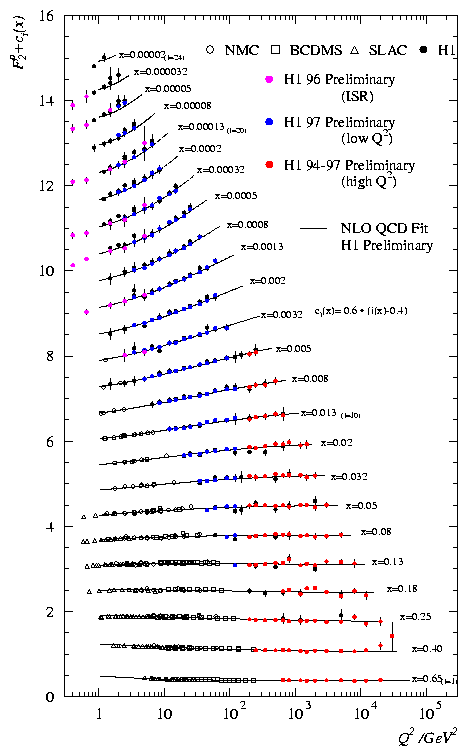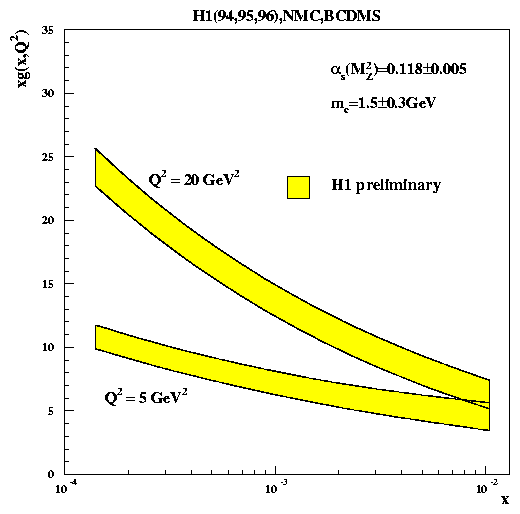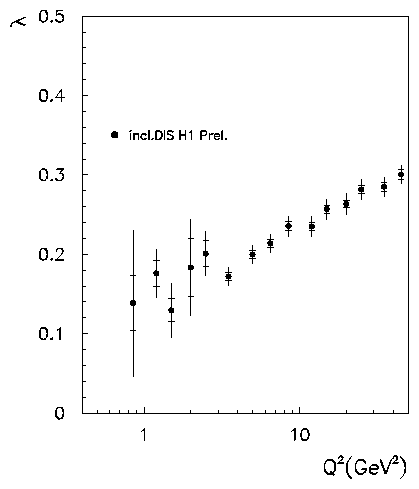 |
At fixed Q2 and small parton momenta xBj, the structure function F2
rises according to (xBj)-lambda which reflects the high gluon density
in the proton. The figure shows the Q2 dependence of the fitted values
of lambda.
The total photon--proton cross section sigmagamma*p is directly related to
this large gluon density: using the
relation xBj sgamma*p ~ Q2 = const. gives an energy dependence of the
cross section as sigmagamma*p ~ F2 ~
(xBj)-lambda ~ (sgamma*p)lambda. |
At large values of Q2 the cross
sections were measured for neutral current events as well as charged current
events. For these measurements the H1 liquid argon calorimeter was calibrated
in situ. The new calibration improves the precision of the measurements
significantly.
|
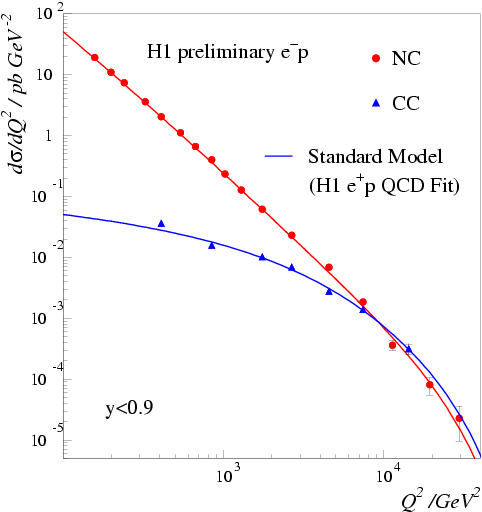 |
The figure shows the single differential cross section measurements
dsigma/dQ2 for electron-proton scattering.
|
In the region around Q2 = 103 GeV2, the neutral current cross section
is dominated by photon exchange. The cross section decreases essentially
as the propagator term 1/Q4. Owing to the dependence of photon-quark scattering
on the quark charge, the lepton interacts preferentially with quarks of
electric charge 2/3, for example u and anti-u quarks. The cross section
is proportional to the square of the electro magnetic coupling constant,
a term depending on the scattering angle theta* in the lepton-quark center
of mass system, y=0.5(1-cos(theta*)), and to the quark distributions x
f of the proton:
dsigmaNC / dQ2 ~ alpha2/x/Q4
((1+(1-y)2) x
( 4/9 (fu/p + fanti-u/p) + 1/9 (fd/p + fanti-d/p) + ...)
For charged current interactions in positron-proton scattering, the
positrons interact only with quarks or anti-quarks of negative electric
charge, for example d or anti-u quarks. Furthermore the helicity structure
of the weak interactions imply specific distributions in the variable y
which is related to the scattering angle in the lepton-quark center of
mass system as explained above. The cross section for charged current events
is proportional to the square of the Fermi coupling constant, to the propagator
term which contains the mass of the W-boson, and to the quark and anti-quark
distributions of the proton:
dsigmaCC /dQ2 ~
GFermi2/(1+Q2/MW2)2
((1-y)2 fd/p + fanti-u/p + ...)
The figure above showing the Q2 dependencies of the cross sections demonstrates
that at small Q2 charged current events are highly suppressed relative
to neutral current events.
At Q2 = 104 GeV2 the unification
of the electroweak forces is visible.
|
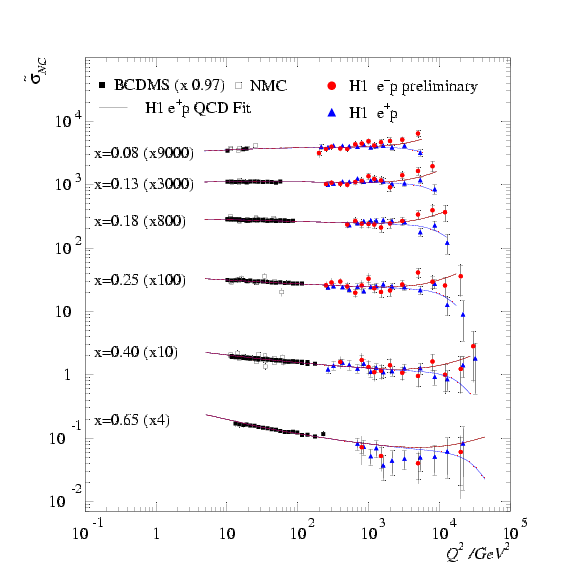 |
At large values of Q2 > 104 GeV2, the
neutral current cross section is modified by Z-boson exchange. For the
first time in lepton-proton scattering the interference between
photons and Z-bosons is visible in the data. |
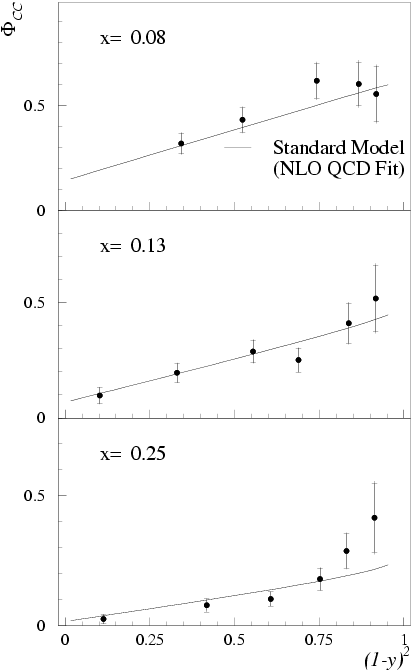 |
The figure shows the
double differential charged current cross section as function of
(1-y)2 in different regions of the quark momentum x.
In this cross section
the effect of the propagator term has been removed
in order to reflect the quark distributions of the proton:
sigmaCC ~
x [(1-y)2 fd/p + fanti-u/p].
In this measurement the contributions
of quarks and anti-quarks from the proton can be separated owing to the
different y distributions. |
The curves reflect parameterizations of the quark and anti-quark contributions.
The contribution of the anti-quarks is essentially flat and decreases with
increasing quark momentum x. In contrast, the distribution of the quark
scattering angle according to (1-y)2 is well visible at large x and shows
the dominance of the the d-valence quark contributions to the cross section
measurement.
|
